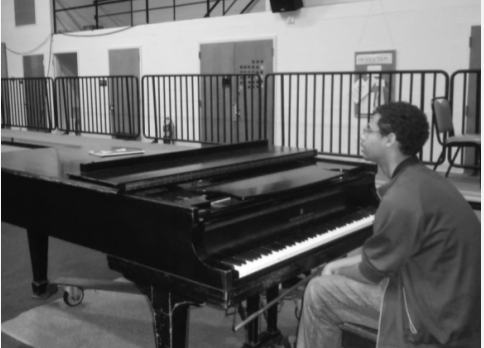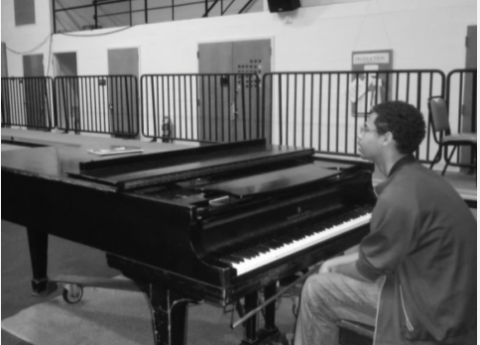Up until last week, I probably thought about the harpsichord as much as the harpsichord thought about me, and so far that relationship has worked fine. I had heard it played somewhere before, probably in the background of a television show on the Ion network or streaming in its 8-bit glory from some obscure computer game of the 90s. Professor Linda Skernick’s harpsichord master class, however, reacquainted me with the antiquated instrument.
Let those words sink in for a second. Harpsichord. Master. Class. This isn’t your grandmother’s harpsichord class, even if your grandmother does happen to play the harpsichord. I walked into Harkness Chapel thinking the piano was, undoubtedly, the coolest keyboard-based instrument. I walked out of Harkness Chapel with a similar thought, except, this time, replace the word ‘piano’ with another word. Can you guess what that word is? You don’t have to, I’ll tell you. Harpsichord.
In all seriousness, while keyboard-based instruments are all pretty amazing, the piano is definitely the star-child among them. People often forget about all the instruments in the keyboard family: the organ, the harmonium, the accordion and the harpsichord to name a few (there are a lot more: clavichord, pianet, melodica, melodeon, virginal, hurdy gurdy, keytar, synthesizer, you get the idea). The harpsichord is awesome for several reasons. It has two keyboards that can be adjusted so that the upper one plays along as you play the lower one. This is because the harpsichord operates differently from a piano. Each time you press the key of a piano, a hammer strikes a string, creating a note. It’s technically a percussion instrument (fun fact). When you push the key of a harpsichord, a string is plucked, kind of like on a guitar. This creates a completely different quality of sound. Where the piano plunks and tinkles, the harpsichord has a kind of nasally wheeze about it. With a piano you can furiously slam on the keys if you want to play loudly (fortissimo) because of the hammer mechanism, but a harpsichord plays at the same volume regardless of the pressure you use. The keys of a harpsichord are also usually narrower, which can make transitioning from the piano rather difficult. The harpsichord also lacks the pedals of a piano, meaning one cannot sustain notes without holding them (harpsichords with pedals do indeed exist, but they are very rare).
These are all qualities of the instrument that quickly became evident to the five Conn students who sat down at the class last week. The narrower keys seemed to be the biggest hump to get over, and the first few minutes of Bach’s Prelude in C Major was littered with errors. After a few minutes of practice, however, the quirks of the instrument became clear, and they became more accustomed. Professor Skernick offered helpful advice along the way, telling students to try playing things differently, with longer pauses in certain sections, or to overlap notes in others. At the same time she explained the importance of remaining faithful to the piece. In a brief anecdote, she explained how she had substantially altered the playing of a piece for a teacher while she was in school. His response “How dare you impose your mediocrity over Bach’s consistency!” had been less than accepting.
At one point in the lesson, the professor noticed a key out of tune and after checking the strings was unable to pinpoint exactly what the problem was. Some of the upper keys simply refused to play. She surprised the class by calling her husband, who had apparently built the thing himself. The class concluded with Professor Skernick playing part of a piece that had been written by Bach, despite being mistaken as someone else’s for centuries. “Scholars now generally agree that it was written by Bach,” the professor reassured us. Eventually, however, the harpsichord proved too out of tune for the professor’s liking, and she stopped short of finishing. Regardless, it was an enlightening experience for participating students, all seemed to agree that playing a harpsichord and playing a piano, while similar, were still two very different skills. •










